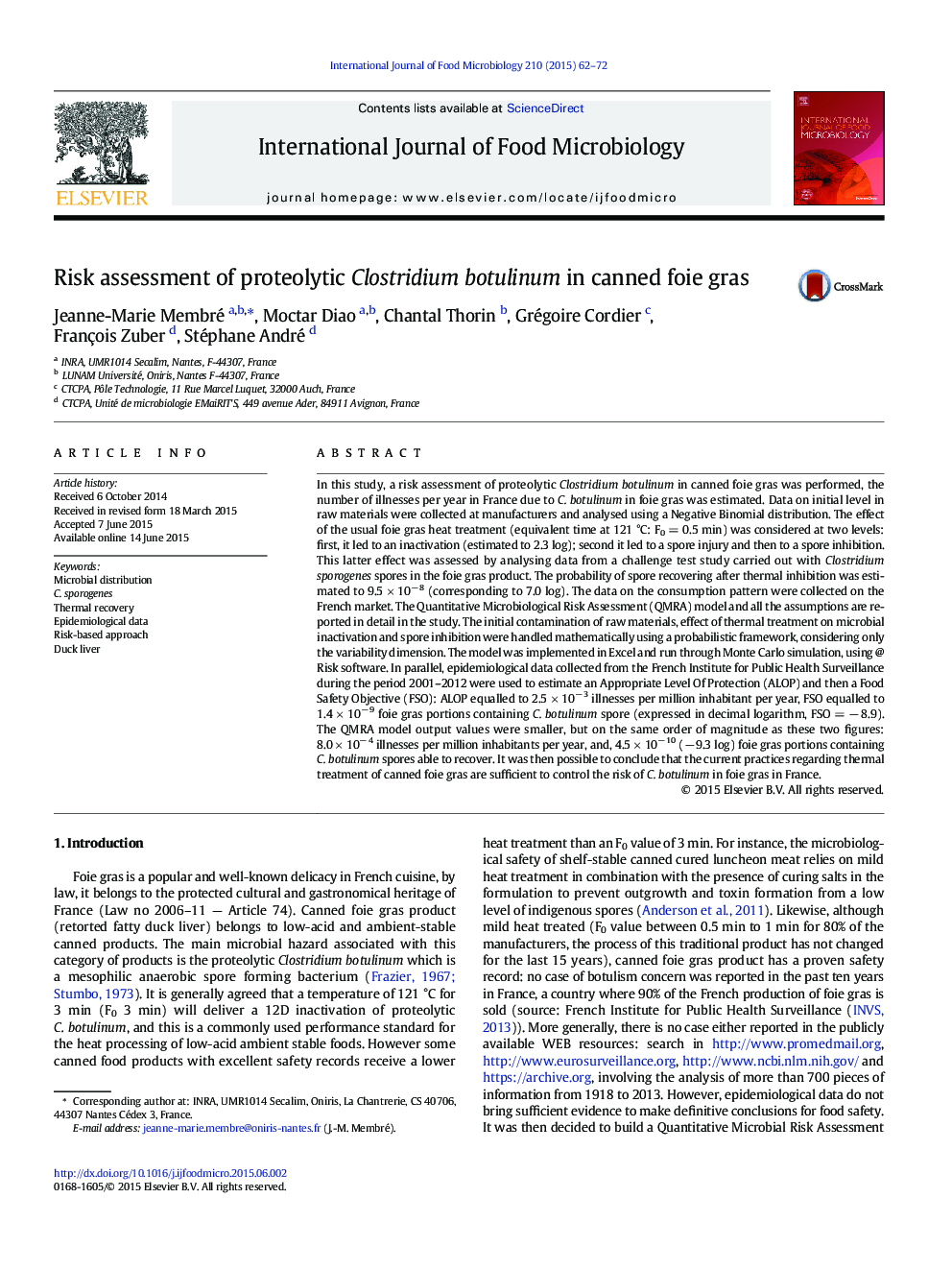| کد مقاله | کد نشریه | سال انتشار | مقاله انگلیسی | نسخه تمام متن |
|---|---|---|---|---|
| 4366489 | 1616573 | 2015 | 11 صفحه PDF | دانلود رایگان |

• A risk assessment of proteolytic Clostridium botulinum in canned foie gras was performed.
• The effect of both spore inactivation and injury was taken into account in the QMRA model.
• The risk of illness due C. botulinum in foie gras was estimated to 8.0 · 10− 4 per million inh.
• Model outputs were compared to FSO and ALOP derived from epidemiological data analysis.
• Current thermal practices are sufficient to control C. botulinum in foie gras in France.
In this study, a risk assessment of proteolytic Clostridium botulinum in canned foie gras was performed, the number of illnesses per year in France due to C. botulinum in foie gras was estimated. Data on initial level in raw materials were collected at manufacturers and analysed using a Negative Binomial distribution. The effect of the usual foie gras heat treatment (equivalent time at 121 °C: F0 = 0.5 min) was considered at two levels: first, it led to an inactivation (estimated to 2.3 log); second it led to a spore injury and then to a spore inhibition. This latter effect was assessed by analysing data from a challenge test study carried out with Clostridium sporogenes spores in the foie gras product. The probability of spore recovering after thermal inhibition was estimated to 9.5 × 10− 8 (corresponding to 7.0 log). The data on the consumption pattern were collected on the French market. The Quantitative Microbiological Risk Assessment (QMRA) model and all the assumptions are reported in detail in the study. The initial contamination of raw materials, effect of thermal treatment on microbial inactivation and spore inhibition were handled mathematically using a probabilistic framework, considering only the variability dimension. The model was implemented in Excel and run through Monte Carlo simulation, using @Risk software. In parallel, epidemiological data collected from the French Institute for Public Health Surveillance during the period 2001–2012 were used to estimate an Appropriate Level Of Protection (ALOP) and then a Food Safety Objective (FSO): ALOP equalled to 2.5 × 10− 3 illnesses per million inhabitant per year, FSO equalled to 1.4 × 10− 9 foie gras portions containing C. botulinum spore (expressed in decimal logarithm, FSO = − 8.9). The QMRA model output values were smaller, but on the same order of magnitude as these two figures: 8.0 × 10− 4 illnesses per million inhabitants per year, and, 4.5 × 10− 10 (− 9.3 log) foie gras portions containing C. botulinum spores able to recover. It was then possible to conclude that the current practices regarding thermal treatment of canned foie gras are sufficient to control the risk of C. botulinum in foie gras in France.
Journal: International Journal of Food Microbiology - Volume 210, 1 October 2015, Pages 62–72